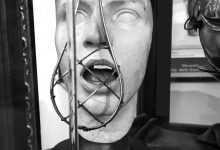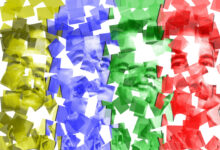
Buy/Gift PRIVATE 42 [S]ocial issues have always been a domain of photo-reportage. Just think of Jacob August Riis, who set out to document How the Other Half Lives (1890), as his book about the East Side slums of New York where immigrants lived in appalling conditions was called. Riis, himself an immigrant from Denmark, who worked as a police reporter for the New York Tribune, became a social agitator who used the camera to further his cause. Or think of Lewis W. Hine, a sociologist and reformer, who started off photographing the arrival of recent immigrants at Ellis Island.
Reportage not only expresses an attitude, it is an attitude. It is not for everybody, it is for the ones who tell us stories, and has, traditionally, been the domain of the socially inclined, the reformers, the humanists, the driven – Sebastião Salgado’s Migrations and James Agee/Walker Evans’ Let Us Now Praise Famous Men belong into this category as well as most of Honoré de Balzac’s, Emile Zola’s, Norman Mailer’s, and Tom Wolfe’s works.
The photographers of this volume report the world as they have researched, investigated, explored, experienced and discovered it, and decided to tell us about. Antonin Kratochvil’s portrayed a Zimbabwe of despondency and despair while Bertrand Meunier’s Coal in Shanxi pictures make one almost breathe the contaminated Chinese air. Dominique Vautrin reflections on solitude in the UK made me think of J.G. Ballard’s dystopian novels and Gary Knight’s images of Polinter Prison in Brazil made me realise (yes, reading photographs is as personal as taking them) in what a privileged Brazil I presently live. John Lambrichts’ recorded the fate of four homeless, alcohol and heroin addicted, brothers in Maastricht, Lamberto Salvan documented the aftermath of a fire that destroyed much of Nairobi’s Mukuru Slum (pictures that made me pay more attention to life in a slum than pictures of an ‘intact’ slum could possibly have) while Lisa Wiltse’s Bangladesh images remind us of the social consequences of global warming. Luca Ferrari shows disturbing images of addiction in Newport and Cardiff (I will see now “Big Issue” vendors with different eyes) and Marco Pighin tells us how women face the Muslim insurgency in Southern Thailand, a violent conflict that so far claimed 2700 lives. Without Marta Sarlo’s photos we would probably never have heard of the psychiatric and penitentiary hospital in Aversa/Caserta (her blurred shot of the birds flying over the building illustrates impressively that this really is another world) and without Massimo Sciacca’s report from Dock Sud, just outside Buenos Aires, one of the most chemically contaminated places on earth would have very likely remained unknown to most of us. Max Peef recorded how, in his words, “in Africa people truly die”, Mike Berube focussed on the violence in the slums of Nairobi following the election on December 27, 2007 while Sohrab Hura (in India) and Tobias Hitsch (in China) chronicled our times by – not only, they do more than that – highlighting the downside of capitalism.
Good photo-reportage makes us ask questions, and this is what the photos in this volume do.
(by Hans Durrer)










One Comment